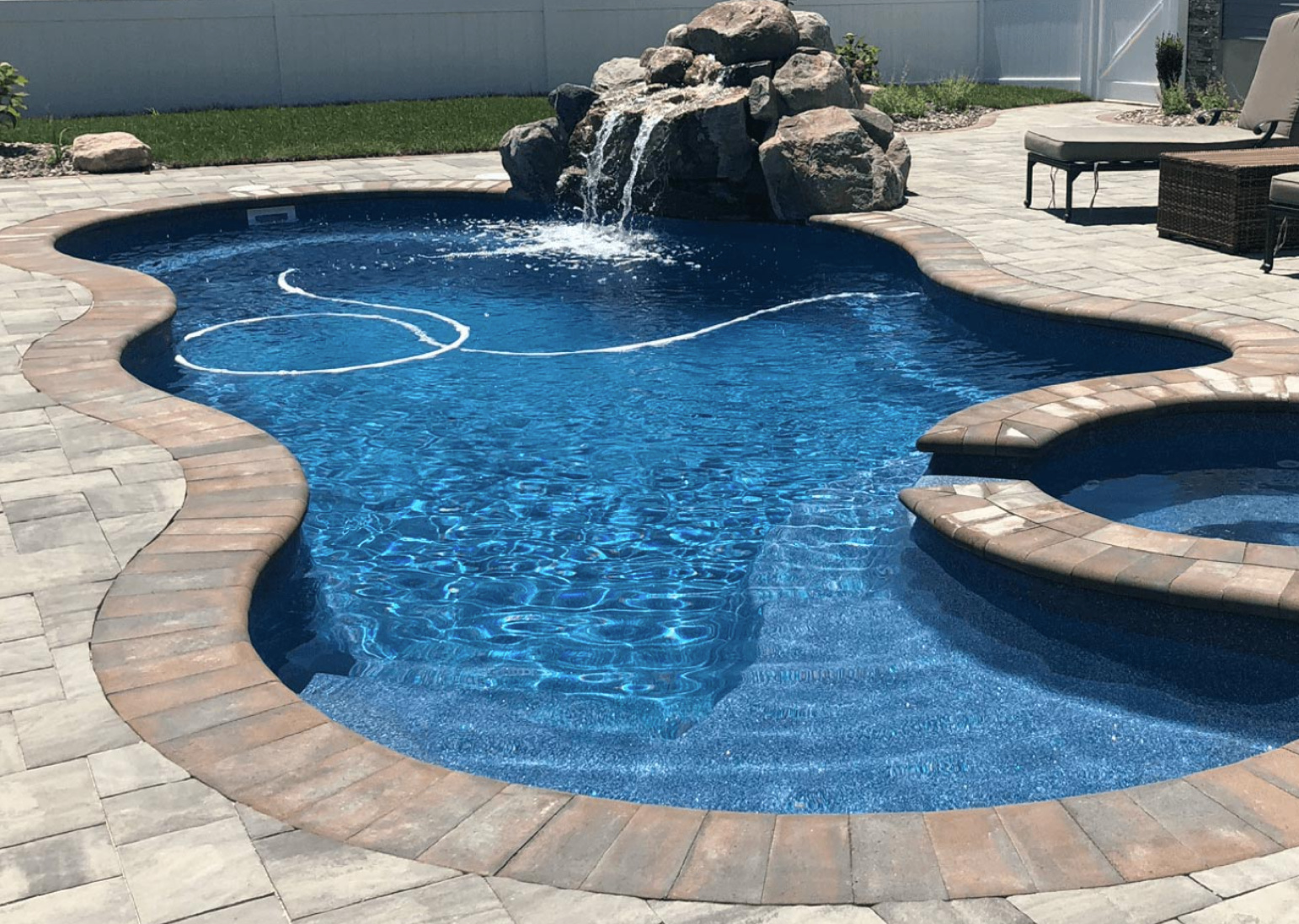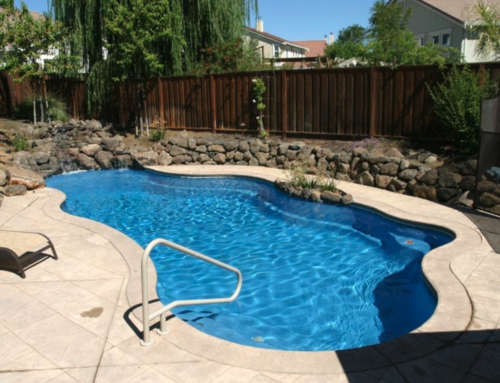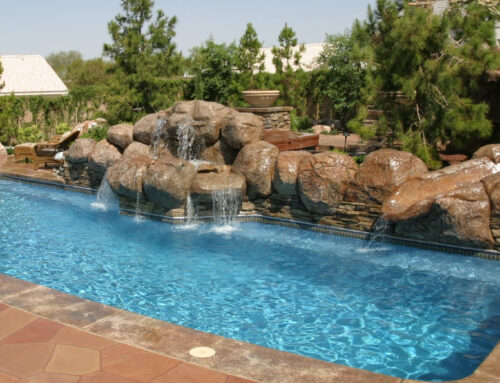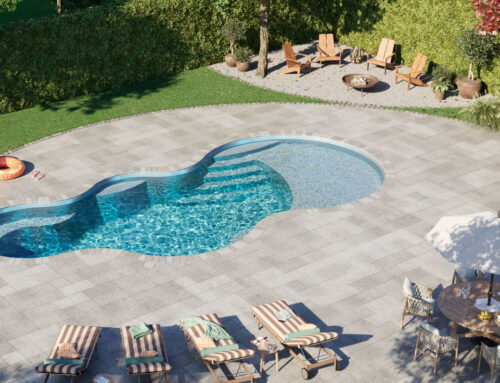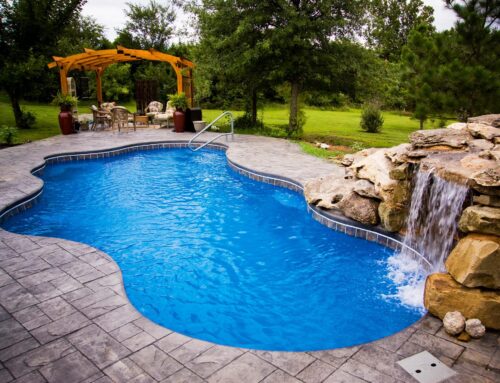Your backyard just received a major upgrade: the fiberglass saltwater pool of your dreams. We installed it and got it all set up and ready for your new pool lifestyle. The water is clean and clear, but what about when we leave? We know you’re excited about your new toy, er, investment, and you want to take the best care of it as possible. But how does one do that? No need to worry, we have some helpful tips for you!
To start with, you made the absolute best choice by choosing a pool made of fiberglass and sanitized by saltwater. Fiberglass pools are smooth and make it less likely for algae and bacteria to grow on your pool walls. Saltwater pools are very straightforward and easier to maintain than traditional chlorine pools. See, you’re already making good choices when it comes to taking care of your pool on your own!
Saltwater Pools: Testing the Water
To ensure your water is safe to swim in and clear, you’ll need to test your water. You can either use pool test strips or a pool test kit to find out the status of your water. With strips, you’ll simply dip it in your pool and compare it to the package to see what chemicals in your water are high, low, or just right. With a test kit, you’ll get samples of water and add reagents according to the directions to get a read of what needs to be adjusted in your pool water.
A Look at Pool Water Chemistry
Now that you know the status of your saltwater pool, you may need to use pool chemicals to make the necessary adjustments. Maintaining pool balance is important for the enjoyment and health of the swimmer, as well as for the longevity and condition of your swimming pool.
- Use a digital or a saltwater test strip to make sure the salinity concentration of your saltwater pool is at a good level, and add salt if it’s low or dilute the water if it’s too high.
- Adjust the alkalinity by raising it or lowering it with an increase or decreaser.
- Tweak the pH level with an increaser or decreaser to put it back in the right range.
- Check the calcium and minerals in your pool and add calcium chloride if calcium hardness needs to be increased and drain some of the water out of your pool and top off with fresh water if it is too high.
- Add additional salt to your pool to be utilized by the salt chlorine generator if your chlorine levels are too low.
- Ensure cyanuric acid levels are optimized. Add di-chlor to increase it and to reduce it use cyanuric acid reducer.
- Measure your total dissolved solids and manage them appropriately. Because you use salt as a sanitizer, you’ll need to adjust the TDS number to cover the necessary salt.
After all of your adjustments, test the water again to be sure your chemistry experiment worked out. If you find you need to make another tweak, go ahead and make it.
Make sure you are using all necessary precautions when you are handling chemicals. Read the instructions that come with each chemical and avoid touching or inhaling them. Use goggles, gloves, and/or a mask if necessary.
Extra Pool Chemicals: Shocking Your Pool
If you’re struggling with bacteria, algae, or some questionable growth in your pool, you may need to shock your pool with an all-at-once chlorine boost. Get an extra dose of sanitation in your pool using pool chemicals such as pool-safe shock powder, di-chlor, liquid chlorine, or granular chlorine. There are also chlorine-free versions of shock available. Be sure the chemical you use is compatible with your saltwater pool.
Managing Filters and the Chlorine Generator
If you want a clean pool, be sure to keep your filter cleaned and well maintained. We most often install cartridge filters for our new saltwater pool owners and these filters will capture large and microscopic debris alike. Because of this, it’s important to take the filter out and give it a good cleaning. Maintain your filter and extend it’s life by spraying off with a garden hose or using a filter flosser. If your filter gauge is reading high, you can also periodically use a gentle filter cleaner spray or soak. If it’s very dirty or you’re about to close your pool for the winter, soak your filter and rinse it off before reinstalling it.
With a saltwater pool, you’ll also need to maintain your salt chlorine generator, ideally checking on it every month or two. Remove any calcium buildup, which looks like white flakes or deposits. You can remove them with a water hose or by hand. If the buildup is stubborn, try a short scrub or soak in a salt cell cleaner and rinse with water.
Cleaning Your Pool: Vacuum and Skim
We recommend vacuuming the bottom and skimming the top of your pool at least once a week if not more. This will help keep your water and pool surface clean, as well as your filters working their best.
Be sure to always follow the manufacturer’s instructions for any pool equipment or chemicals that you use. It can sound like a lot at first, but trust us, once you get the hang of taking care of your pool, it will be like second nature.
With The Pool Guyz on your side, you’ll always have the info you need to maintain your beautiful new pool. And if you haven’t installed the perfect pool yet, we have all the options you could ever want. A saltwater pool Virginia Beach option is excellent or a Florida fiberglass saltwater pool can make your backyard a dream. Contact us today to get started on your favorite backyard amenity.

